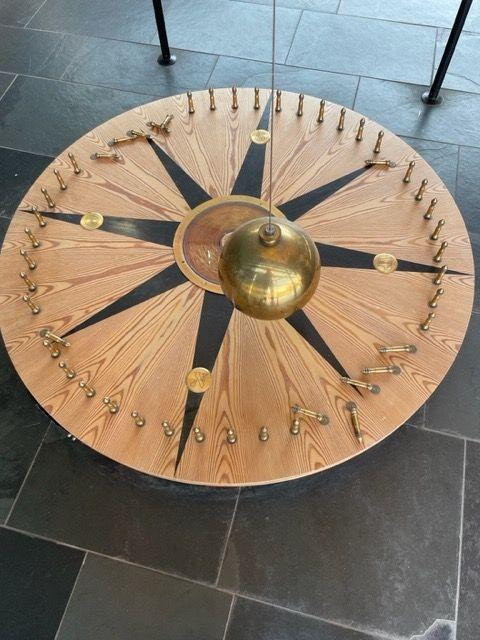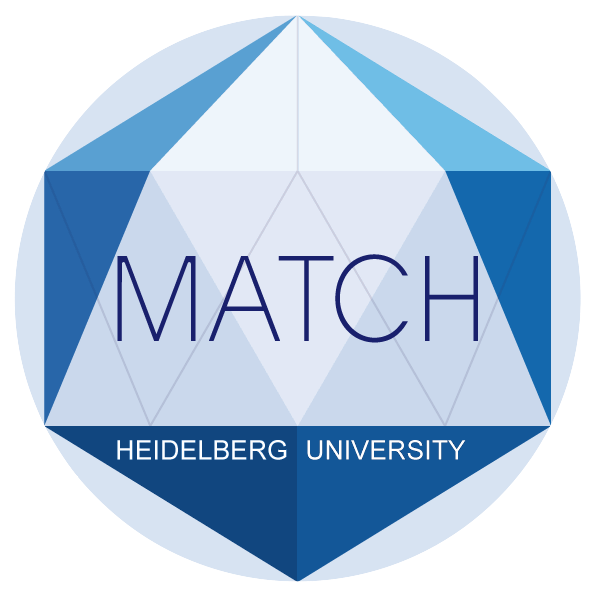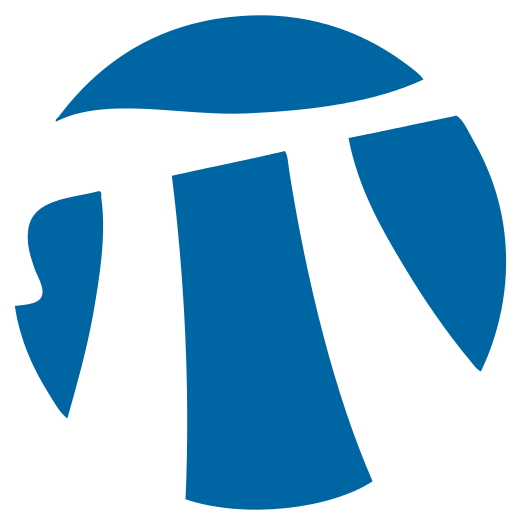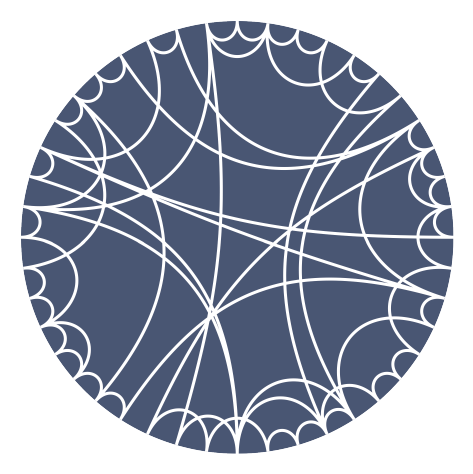
Schedule
All in person talks will take place in the Conference Room in the 5th floor of the Mathematikon (directions here), coffee breaks in the adjacent Common Room.
Remote participation (excluding virtual coffee) will be possible from 9am to 6pm Monday through Friday via the Zoom linked below.
Please note that classes are in session, and that we share space with other regular activities.
Schedule
Monday, June 12, 2023
MATCH Director
We discuss two approaches to solving inhomogeneous equations of the form L(.)=t1/d, where L is a hypergeometric differential operator attached to a family of CY varieties. The first is by elementary complex analysis, using so-called Frobenius deformations, and gives an explicit series solution.
The second is via normal functions attached to algebraic cycles (both "classical" and "higher") on a base-change of the family. I will briefly review regulator maps, their relation to inhomogeneous Picard-Fuchs equations, and the relevant cases of the Beilinson conjecture. Turning then to the CY3 examples classified by Doran-Morgan, I will explain how to identify which types of cycles arise (viz., K0, K2, or K4 classes), and how to identify the cycles in certain cases.
This is the first half of a joint talk with V. Golyshev, whose part will discuss the Beilinson conjecture aspect in greater depth.
Coffee is served hot
This is a continuation of Matt Kerr's story, and covers our joint work in progress. I will explain how to write down regulator-like quantities in certain hypergeometric families of CY motives and compare them to the respective L-values or L-derivatives.
We review three perspectives on topological intersection theory for singular spaces: Cheeger's L2 cohomology, the intersection cohomology of Goresky and MacPherson, and a more recent homotopy theoretic perspective. The latter will constitute the focus of the talk. The associated cohomology theory is not isomorphic to intersection cohomology and we will provide several alternative descriptions of it, such as a de Rham picture and an L2-Hodge description. Classical intersection homology is invariant under small resolutions; the new theory is invariant under "small" deformations and sometimes carries a mixed Hodge structure. We will illustrate the theory on examples including toric varieties and the Calabi-Yau quintic. We conclude with observations on conifold transitions and mirror symmetry.
- Thai curry with chicken breast and fragrant rice
- Thai vegan curry with vegetables and fragrant rice
- Dessert in the Gläschen
I will report on joint work in progress with Luca Giovenzana. After giving a very brief introduction to the theory of pseudolattices, I will describe how they show up naturally in the context of Type II degenerations of K3 surfaces, and show how this can be used to recover some classical results on Type II degenerations due to Friedman. I will then describe how the same picture appears in the context of elliptically fibred K3 surfaces, and discuss how these structures seem to provide a natural setting to study mirror symmetry for Type II degenerations of K3 surfaces.
Bounding chains are a prerequisite to defining open Gromov-Witten invariants in the language of Fukaya algebras. In a joint work with Jake Solomon we showed that, no matter how large the space of parameters for bounding chains is, only one of the parameters will affect the values of the resulting invariants. This translates to saying that the only boundary constraints allowed in open Gromov-Witten invariants are points.
In this talk, I will review the construction, justify the above statement, and illustrate its non-triviality by introducing a new classification theorem where many different parameters show up naturally. The moral of that is: Open Gromov-Witten invariants are truly invariants of the Lagrangian submanifold, not of an object in the Fukaya category.
We begin with the statement of the classical Hodge conjecture. We then discuss Q-spreads, arithmetic de Rham cohomology, absolute Hodge classes, in connection with Voisin’s work. We then discuss the story for higher K-theory, leading up to the Bloch-Kato theorem.
Tuesday, June 13, 2023
Recently, certain widely accepted beliefs about the string theory landscape have been challenged. In part, this is was possible because important parametric constraints obeyed by the relevant compact geometries were overlooked. In part, overly optimistic assumptions about the multitude of Calabi-Yau-based geometries may have been made. I review some of the key challenges, explaining in particular the Singular Bulk Problem, the Tadpole Constraint and the Tadpole Conjecture. I will also discuss which concrete geometrical questions may help to overcome those challenges or, on the contrary, to remove large parts of the string landscape.
We discuss how to extend the Doran-Harder-Thompson (DHT) mirror construction in case of some higher type degenerations of a Calabi-Yau manifold X. One of the key ingredients is a higher rank Landau-Ginzburg (LG) model, a multi-potential analogue of the ordinary LG model that will describe a mirror of each component in the degeneration fiber. They can be glued to produce a mirror Calabi-Yau Y with a Calabi-Yau fibration structure. Moreover, the perverse Leray filtration associated to this fibration is predicted to be mirror to the monodromy weight filtration in the degeneration of X. We explain how this “P=W” type phenomenon is related with another mirror P=W, introduced by Harder-Katzarkov-Przyjalkowski, for the mirrors of components of the degeneration fiber.
- classic lasagna (beef) with mixed salad
- vegetarian lasagna with mixed salad
- dessert in the Gläschen
Type A flag varieties can be constructed both as homogeneous spaces G/P and as GIT quotients V//H. These two different constructions give different perspectives on the quantum cohomology (different bases and sets of structure constants) and mirror symmetry (the Gu—Sharpe mirror and the Plucker coordinate mirror) of flag varieties. In this talk, I’ll discuss these two different perspectives on these topics, their advantages and disadvantages, and what is known about the relation between them.
This talk is based on joint work with Bumsig Kim, my friend and collaborator. It is dedicated to his memory. Gauged Linear Sigma Models (GLSMs) serve as a means of interpolating between Kahler geometry and singularity theory. In enumerative geometry, they should specialize to both Gromov-Witten and Fan-Jarvis-Ruan-Witten theory. In joint work with Bumsig Kim (see arXiv:2006.12182), we constructed such enumerative invariants for GLSMs. Furthermore, we proved that these invariants form a Cohomological Field Theory. In this lecture, I will describe GLSMs and Cohomological Field Theories, review the history of their development in enumerative geometry, and discuss the construction of these general invariants. Briefly, the invariants are obtained by forming the analogue of a virtual fundamental class which lives in the twisted Hodge complex over a certain "moduli space of maps to the GLSM". This virtual fundamental class roughly comes as the Atiyah class of a "virtual matrix factorization" associated to the GLSM data.
Wednesday, June 14, 2023
As a result of work of Bloch-Esnault-Kreimer, and subsequent work of Brown, one can reinterpret Feynman integrals as periods of mixed Hodge structures attached to pairs of hypersurfaces in certain toric varieties. The hypersurfaces taking part in this construction are built from a Feynman graph. This is essentially the data of a graph decorated with mass parameters attached to each edge and momentum parameters attached to each vertex. Despite the combinatorial origin of their geometry, the motives of Bloch-Esnault-Kreimer and Brown are only understood in a few basic cases. In this talk, I will discuss results which show that for a simple but infinite class of graphs, the mixed Hodge structures controlling the corresponding Feynman integrals are built from hyperelliptic curves. This generalizes results of Bloch and Kerr and helps clarify many computations appearing in the physics literature. I'll demonstrate this in some examples and discuss the relationship to computational work of Lairez-Vanhove.
I will explain how hypergeometric Landau-Ginzburg (LG) models offer a tool to build Hodge-theoretic mirrors for certain Fano varieties out of the known constructions. Among these Fanos is the Johnson-Kollár series of anticanonical log del Pezzo surfaces. I will describe the Hodge-theoretic mirrors of these surfaces, built jointly with A. Corti, and I will exhibit full exceptional collections for the derived category of the associated stacks. This last result is joint with F. Rota and is part of an ongoing project with F. Rota and M. Habermann to study homological mirror symmetry for the surfaces.
- Schnitzel from the chicken breast with house potato salad, colorful leaf salad
- vegetarian Maultaschen with house potato salad, colorful leaf salad
- Dessert in the Gläschen
Line operators in higher dimensional supersymmetric gauge theories sometimes form braided tensor categories. Physics suggests that these categories can be realized geometrically as well as via a suitable boundary VOA or chiral algebra.
Unfortunately, these categories are usually neither finite nor semisimple, i.e. they are complicated, and presently not well understood. I will explain my understanding on how to find an explicit Hopf algebra, as e.g. a quantum group, that realizes these categories. This will be illustrated in a simple example.
The dualities between Heterotic-IIA string theory is known since the mid-90s. In this talk, we propose that, at the geometric level, and in the bulk of the 4D, N=2 Higgs branch, the duality between Heterotic string on K3×T2 and IIA string on K3 fibered Calabi-Yau threefold emerges from IIB string compactified on an M-polarized K3-fibration. We present some evidence to support this in case where the IIA string can be lifted to F-theory. This is an ongoing project, and more general results will be published in the future.
We plan to gather in the Common Room and leave at 4pm sharp. Rough plan is to cross Neuenheim along Blumenthalstrasse and climb Heiligenberg via the North-West Hainsbach route or Mühlbach variant. We should be able to resupply at the Waldschenke, and can then walk back down to Old Heidelberg via Philosophen- or Schlangenweg.
Thursday, June 15, 2023
The partition function of topological string theory is an asymptotic series in the topological string coupling and provides in a certain limit a generating function of Gromov-Witten (GW) invariants of an underlying Calabi-Yau threefold X. I will discuss how the resurgence analysis of the partition function for a class of non-compact geometries allows one to extract the Donaldson-Thomas (DT) or BPS invariants of the same underlying geometry X. I will further discuss how the analytic functions in the topological string coupling obtained by Borel summation admit a dual expansion in the inverse of the topological string coupling leading to another asymptotic series at strong coupling and to the notion of topological string S-duality. I will further discuss how this S-duality leads to a new modular structure in the topological string coupling which is captured in terms of elliptic gamma functions. I will also discuss relations to refined topological string theory, difference equations and the exact WKB analysis of the mirror geometry. This is based on various joint works with Lotte Hollands, Arpan Saha, Iván Tulli and Jörg Teschner as well as on work in progress.
Donaldson-Thomas (DT) invariants of a quiver with potential can be expressed in terms of simpler attractor DT invariants by a universal formula. The coefficients in this formula are calculated combinatorially using attractor flow trees. In joint work with Bousseau (arXiv:2302.02068), we prove that these coefficients are genus 0 log Gromov--Witten invariants of d-dimensional toric varieties, where d is the number of vertices of the quiver. This result follows from a log-tropical correspondence theorem which relates (d-2)-dimensional families of tropical curves obtained as universal deformations of attractor flow trees, and rational log curves in toric varieties.
- couscous with oriental vegetables and pollo fino
- couscous with oriental vegetables and halumi
- Dessert in the Gläschen
Mikhalkin's celebrated correspondence theorem establishes a correspondence between algebraic curves and tropical curves. Consequently, the count of algebraic curves equals the weighted count of tropical curves. There are several versions of this correspondence including one for the count of complex curves and one for the real count. In the talk, I will present work in progress joint with Andrés Jaramillo Puentes in which we provide a version Mikhalkin's correspondence theorem over an arbitrary base field k. I will also give a short introduction to counting curves over different fields and tropical geometry.
We recall some relations between the Grothendieck Ring of Varieties and the Grothendieck Witt Ring of Quadratic forms and use them to get refinements of Donaldson-Thomas (DT) invariants taking values in the latter starting from the motivic DT invariants. Our main example is the case of degree zero invariants of A3, from which we can recover real and complex invariants. We raise some questions regarding the generality of these refinements and their relationships with the literature in both A1-enumerative geometry and in motivic DT theory. This is joint work in progress with Johannes Walcher.
We consider a class of Feynman Graphs in a 2d conformal field theory which encapsulates the integrability of N=4 SYM theory.The amplitudes in these theories are related to the quantum volumes of families of Calabi-Yau varieties, which we can associate to all graph configurations on the tiling. Their Gauss-Manin connection expresses the Yangian Symmetry of the physical theories. This work generalizes the approach pioneered in https://arxiv.org/abs/2209.05291
Please make sure to deposit your 20€ contribution (cash only) with Nora Schrenk ahead of time.
Our reservation is for 19:00 at the restaurant Weisser Bock in Old Town Heidelberg. Bus #31 leaves from "Bunsengymnasium" every 10 mins and takes about 14 mins to "Marstallstrasse".
Menu:
- Asparagus Cream Soup
- Black Feather Chicken with Mushrooms / Broccoli / Gnocchi; Vegetarian option: Risotto with Mushrooms / Parmesan
- Strawberries, mascarpone ice cream
Friday, June 16, 2023
With Spencer Bloch and Robin de Jong, we recently proved that in a nodal degeneration of smooth curves, the periods of the resulting limit mixed Hodge structure (LMHS) contain arithmetic information. In particular, if the nodal fiber is identified with a smooth curve C glued at two points p and q then the LMHS relates to the Neron-Tate height of p−q in the Jacobian of C. In making this relation precise, we observed that a "tropical correction term" is required that is based on the finite reductions of the degenerate fiber. In this talk, I will explain this circle of ideas with the goal of arriving at the tropical correction term.
After group picture on the Mathematikon roof terrace.
Airy structures were introduced by Kontsevich and Soibelman in 2017 as an algebraic reformulation and extension of the Chekhov-Eynard-Orantin topological recursion, which appears in many contexts, from enumerative geometry to mathematical physics. In this talk I will introduce the concept of Airy structures as particular left ideals in the Rees Weyl algebra, such that the quotient of the algebra by the ideal is canonically isomorphic to a Rees polynomial module twisted by an automorphism of a simple type. This approach provides a clean reformulation of the theory in the language of D-modules, in which the foundational existence and uniqueness theorem of Kontsevich and Soibelman follows naturally. I will then mention some recent applications of the theory to enumerative geometry, VOAs and gauge theories, and discuss potential generalizations. My hope with this talk is to convey why I believe that the formalism of Airy structures (and topological recursion) should be in the toolbox of all geometers and mathematical physicists!
- Salmon fillet in Riesling cream with vegetables and tagliatelle
- Vegetables a la creme with tagliatelle and Italian cheese, colorful leaf salad
- Dessert in the Gläschen


